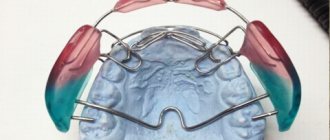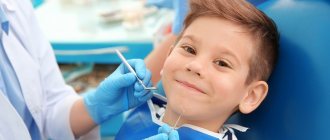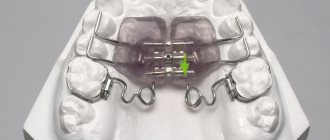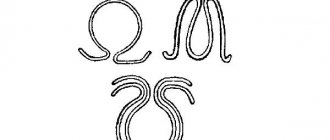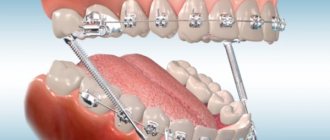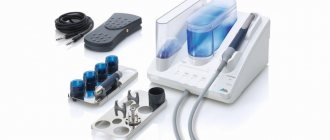The standard approach, long practiced in dentistry, was to begin correcting malocclusions and dentition defects only after the patient reached middle adolescence. The principle is based on natural human physiology - by the onset of this stage, the main processes associated with the formation of the dentofacial apparatus are coming to an end.
However, the designs used in orthodontics today allow for an early start of correction - at the stage of temporary occlusion. Thanks to new techniques, patients avoid negative consequences and long-term treatment. Among the popular devices, the system developed by the German dentist E. Haas deserves special attention, demonstrating high rates of treatment effectiveness.
Design of the Marco Rosa apparatus and the Haas apparatus
The Marco Rosa apparatus (its creator is Dr. Marco Rosa) is very similar to the Haas apparatus and is a non-removable intraoral plate apparatus, made individually from dental casts. The device is secured with rings to the chewing teeth and has additional support on the fangs. In the central part of the plate there is a screw for expanding the upper jaw.
The Marco Rosa apparatus and the Haas apparatus are used to expand the maxilla. The advantage of these devices for maxillary expansion is that you cannot forget to put them on or lose them. The devices operate around the clock, which improves the quality of treatment and reduces the time of orthodontic treatment.
When developing the design of the device, the child can choose the color of the plastic parts, add decorations to them - pictures, sparkles, etc. This increases motivation and helps eliminate anxiety about the upcoming treatment.
General overview
The Haas appliance belongs to the category of fixed mechanical orthodontic devices designed to move teeth in certain directions and expand the child’s jaw rows.
It consists of the following structural elements:
- metal frame made of medical steel, eliminating the development of an allergic reaction;
- plastic plates that help increase the support area on the palatal surface;
- Hyrex expansion screw , which allows you to adjust the size of the device during treatment;
- rings and clasps used to fix the device on the patient’s teeth.
The Haas device is used during primary dentition to expand the palatal plane and create additional space for the eruption of permanent elements of the row.
It is fixed using fasteners on the primary canines and second molars of the upper jaw row.
The device is manufactured individually for each patient, taking into account his clinical situation, after a preliminary examination of the oral cavity and taking an impression. Composite materials or dental cement are used to fix the device.
When to use the Marco Rosa apparatus and the Haas apparatus
The Marco Rosa apparatus, like the Haas apparatus, is used to expand the upper jaw in children aged 6-9 years during the period of occlusion change.
The use of the Marco Ross apparatus or the Haas apparatus allows us to solve the following problems:
- lack of space for permanent teeth – growth of teeth in the second row, crooked teeth;
- crossbite;
- advancement of the lower jaw;
- speech therapy problems;
- violation of nasal breathing associated with the narrowness of the nasal passages.
Causes of narrowing of the upper jaw
- genetic reasons;
- mouth breathing due to insufficient patency of the nasal airways (adenoids, polyps, allergic edema);
- a constantly open mouth (not associated with mouth breathing) due to improper functioning of the facial muscles.
Expected Result
Orthodontic correction using the Haas appliance helps achieve the following results:
- Normalize the parameters of the maxillary row (i.e. length and shape).
- Create additional space for proper growth of permanent units within the maxillary arch.
- Provide conditions for the normal position of the tongue in the oral cavity.
- Expand the nasal passages for the unobstructed passage of air and normalize respiratory function.
The ideal time for orthodontic correction with this device is considered to be the age of children 6-9 years old, i.e., when there is a natural replacement of milk units with permanent teeth.
The use of the device during this age period helps to expand the maxillary arch by 0.9-1.2 cm. The result of the correction is visually visible within 3-4 weeks from the date of placement of the device.
But to completely fill the palatine gap with tissue, it may take up to 9 months, during which the device will remain in the mouth.
How the Marco Rosa appliance and the Haas appliance work for maxillary expansion
After consultation and diagnosis, the orthodontist makes calculations and transfers dental impressions to the dental laboratory. The production time for the device is about 10 days. The orthodontist fixes the fixed appliance with special glue onto previously cleaned teeth. Activation of the screw (turning the screw with a key) causes expansion of the palatal suture and a gradual increase in the size of the upper jaw.
Getting used to the Marco Rosa apparatus (Haas apparatus) takes several days (diction is slightly impaired). The plate does not put pressure on the palate, but only lightly touches it. From the outside, the Rosa apparatus is practically invisible.
Activation of the screw to expand the upper jaw is carried out by parents at home, at the same time every day, according to a scheme developed by the orthodontist. The expansion of the upper jaw lasts about 3-4 weeks. Then the device remains on the child’s teeth for another 7-8 months to stabilize the achieved result.
During treatment with a fixed apparatus for expanding the upper jaw, no special hygiene is required; it is enough to brush your teeth twice a day and use an irrigator.
When the upper jaw expands, the nasal passages expand, which is important for patients with impaired nasal breathing.
The Marco Rosa apparatus expands the upper jaw, but since the growth of the jaws is interconnected, the lower jaw is also affected, it adapts to the changes that occur.
Habituation phases
Adaptation of a child to a foreign body fixed in the oral cavity occurs in several stages, during each of which certain difficulties are present:
- The irritation phase appears the first day after the Haas apparatus is secured in the child’s oral cavity. It is characterized by the occurrence of a gag reflex, increased salivation, and a decrease in the efficiency of the chewing process.
- The partial inhibition phase begins on the second day and lasts about four days. At this time, salivation decreases slightly, chewing function normalizes, and the gag reflex gradually disappears.
- The braking phase lasts for the next four weeks. This stage of adaptation is characterized by the complete restoration of salivation and the chewing process. The child ceases to perceive the device as a foreign object.
How the Brückl-Reichenbach apparatus works and how effective treatment with the device is.
In this publication, read how an anti-snoring mouth guard works.
Here https://www.vash-dentist.ru/ortodontiya/prikus/formirovaniya-smennogo.html we’ll talk about the dangers of early mixed bite.
Examples of treatment with the Marco Rosa apparatus from the practice of orthodontists “Dial-Dent”
Example 1
Girl 7 years old. Open bite, narrowing of the upper jaw, constantly breathes through the mouth.
With the help of the Marco Rosa apparatus, the expansion of the upper jaw to the required size was achieved, and nasal breathing was normalized. Orthodontist M.P. Sleptsova, assistant orthodontist L. Rodina.
Example 2
Boy 8 years old. Narrowing of the upper jaw, advancement of the lower jaw. The beginning of the development of class 3 malocclusion (in adults with class 3 malocclusion, more complex and lengthy treatment is required).
As a result of the treatment, the upper jaw was expanded, and correct closure of the teeth in the anterior region was achieved. Orthodontist M.P. Sleptsova, assistant orthodontist L. Rodina.
Example 3
Boy 8 years old. Deep incisal overjet, not enough space for permanent teeth (second incisors).
After treatment with the Marco Rosa apparatus, the size of the jaws was normalized, and enough space was created for the eruption of permanent second incisors. Orthodontist M.P. Sleptsova, assistant orthodontist L. Rodina.
Reviews
Orthodontists note the high effectiveness of the Haas system in correcting the width of the upper jaw row during primary and mixed dentition.
The use of this device allows you to expand the palatal plane, creating the opportunity for the correct eruption of permanent teeth within the jaw arch.
The process is accompanied by minor discomfort during the period of adaptation to the design, but is highly effective and short in duration.
Share your impressions of using the Haas apparatus to correct the size of the upper jaw row in the comments section of the article.
If you find an error, please select a piece of text and press Ctrl+Enter.
Tags: Haas apparatus, bite correction
Did you like the article? stay tuned
Previous article
Dental Di technology for new generation partial dentures
Next article
Why do dentists choose Valplast dentures?
Will I need braces later?
Orthodontic treatment in children using a fixed Marco Ross appliance helps to normalize the size of the upper jaw, which prevents negative changes in the facial skeleton (protrusion of the lower jaw or its retraction, severe narrowing of the upper jaw), which change the harmony of the face. If the problem of underdevelopment or narrowing of the upper jaw is left unresolved in childhood, surgical expansion of the upper jaw may be required in adulthood.
You may need treatment with braces or mouth guards in the future, but this treatment will be faster and more effective. Quite often, additional wearing of braces after orthodontic treatment with a fixed Marco Rosa appliance is not required.
Advantages and disadvantages
The Haas appliance has a preventive effect, preventing the development of a number of possible pathologies that appear during the formation of a permanent dentition in adolescence. However, achieving the desired result requires strict adherence to the schedule of visits to the dentist, which is necessary to monitor the dynamics of changes.
Among the positive aspects noted by dentists who have experience working with the system are the strength and aesthetic properties of the structure. The device is extremely difficult to break, and while worn it is practically invisible to others, which is especially important in adolescence, when any changes in appearance can cause ridicule from others. In addition, the advantages provided by the device include:
- No need to prepare supporting units;
- Eliminating the possibility of repeated deviations in the development of occlusion;
- Ease of use and ease of oral care;
- Reducing the duration of wearing braces.
Among the disadvantages noted by experts, it is worth mentioning the possibility of irritation of the mucous tissues of the palate with constant contact with the base of the device, as well as the need to adapt to the installed system. In addition, ordering, manufacturing and installing a Haas apparatus will cost more than correction using other systems.
Features of the use of the Marco Rosa apparatus in Dial-Dent
Family Dental Orthodontists have a comprehensive approach to correcting malocclusion in children, so the clinic employs an ENT doctor and a speech therapist who help eliminate the causes of malocclusion, thereby increasing the effectiveness and stability of orthodontic treatment.
If there are problems with nasal breathing, ENT doctor A.V. is involved in treatment. Arkhandeev. The participation of an ENT specialist in orthodontic treatment is very important, since without normalization of nasal breathing, the treatment result will not be stable and no device will help!
If there is improper muscle function, incorrect position of the tongue, infantile swallowing, if the mouth is constantly open, even when breathing through the nose, a speech therapist - myofunctional therapist T.B. takes part in the treatment of children. Zukor. Classes with a speech therapist normalize the tone of the facial muscles, eliminate excessive pressure of the tongue on the teeth, normalize swallowing and breathing - that is, they remove factors that provoke malocclusion.
See the price list of the clinic for the cost of the Marco Rosa device.
Cost of treatment
Orthodontic treatment with a Haas appliance is a very expensive process. The average cost of fixing a structure in Moscow dental clinics reaches 15-18 thousand rubles.
If there is a need for additional services, for example, re-fixing structural elements, the cost of manipulation will be paid additionally.
In some cases, after removing the Haas system, it may be necessary to continue treatment using braces, the cost of which is also paid additionally and depends on the type, material and structural features of the chosen design.
Advanced training for Dial-Dent specialists
The creator of the device for expanding the upper jaw is orthodontist Dr. Marko Rosa conducts lectures and seminars so that orthodontists learn all the features of the device and learn how to use it most effectively. Orthodontists "Dial-Dent" M.P. Sleptsova and O.N. The selector was trained by the author of the device.
Seminar Dr. Marco Rosa in Minsk at the Renaissance Minsk Hotel, October 2016
Orthodontists "Dial-Dent" O.N. Selector and M.P. Sleptsova at the seminar of Dr. Marco Rosa in Minsk at the Renaissance Minsk Hotel, October 2016
Orthodontists around the world have recognized the Marco Rosa apparatus as effective for orthodontic treatment of children and use it in their practice.
Make an appointment for a consultation by phone +7-499-110-18-01 or through the form on the website. You can ask questions about correcting your bite to the chief doctor of the clinic, Sergei Vladimirovich Tsukor, at
Expansion of the dentition: conservative and surgical methods
Tooth displacement and crowding due to narrowing of the jaw arch is not only an aesthetic defect. Failure to correct this pathology first leads to disruption of the correct function of the alveolar apparatus, and then to changes in the bite.
Currently, a wide range of braces are used to expand the dentition, differing in functionality and mechanism of action.
The content of the article:
Indications
Indications for tooth enlargement are:
- Failure to maintain the normal width in the lateral sections with the development of a transverse bite. Dilatation is indicated when the anomaly affects several teeth, but there is no change in the inclination of the alveolar processes. Mesial bite with a deviation of the third degree in English. Narrowing of the circumference and apical base of the maxillary arch. The pathology is aggravated by twisting of the buccal root or decreased nasal resistance. Micrognathia. Protrusion of incisors.
Hardware technique
The use of jaw expansion appliances is considered a conservative and moderate option and can therefore be used to correct both permanent and replacement bites.
The increase in dentition is achieved due to low impact force, which allows this method to be used not only for the treatment of adults, but also for young children.
Dental stenosis is a fairly common anomaly, which is characterized by many clinical symptoms. The variability of its development required specialists to use various devices.
Therefore, for each indication, specific methods have been developed, differing in their mechanism of action. Often several methods are combined.
According to reviews, the combined use of an orthodontic device and a Derichswyler device allows you to maximize the effectiveness of therapy, and the use of sapphire models, such as Damon Clear, makes the process comfortable and invisible to others.
Derichsweiler apparatus
The Derichsweiler apparatus is a device consisting of support rings and arcs connecting them. The support rings are attached to the molars and have a soldered lock into which the arches are fixed.
The arches converge around the palatal arch, where the activator is located - a screw that transmits a certain constant pressure during rotation. Under its influence, the palatal suture opens and the jaw expands.
The space created by the opening of the palate is filled with new bone tissue over time.
The main indication for the use of this device is the narrowing of the dental arch of the upper jaw during early occlusion. When treating anomalies of the permanent dentition, the device gives minimal results, since it cannot cope with the ossified palatal suture.
This device has a number of advantages:
- thin in correction, so it does not cause discomfort when worn; the impossibility of removing braces allows you to quickly restore the correct condition of the jaw; the design does not damage the periodontium and soft tissues of the palate.
However, in addition to its advantages, the device also has disadvantages:
- in the first days of wearing, increased salivation and disturbances in the pronunciation of sounds may be observed; in some cases, injury to the surface of the tongue occurs; inability to self-regulate. Frequent visits to the dentist are necessary; Wearing it interferes with proper oral hygiene.
Read about closing the diastema with composite material in a separate publication.
The following article discusses the causes of underbite.
Palatal expander
This device is suitable for increasing only the upper jaw during the period of alternating and permanent dentition.
Classic braces consist of support rings that are placed on the back of the teeth. Typically, one pair is placed on the premolars and the other on the penultimate molars.
The power arcs are soldered to support rings, which are located across each other. In the central part of the device, in the medial part of the palatal arch, there is a special screw. It is designed to activate the device and provide constant pressure on the sides of the jaw.
The palatal expander has special advantages:
- It has a pronounced strength effect, due to which expansion occurs in a short time. Correcting an intermittent bite may take about 1 month.
In case of correction of permanent occlusion anomalies – 3 months; tends to shift teeth; during correction, the maxillary arch expands, but the roots remain in their cavities without creating an expansion; possibility of self-activation, which occurs using a special key. The composition is activated once every 2 days.
The disadvantages of a palatal expander include:
- permanent injuries to the tongue and friction against the soft tissue of the palate; A minimum of 1 mm activation is required for rapid expansion. In comparison, other devices require only 0.25mm activation.
Such pressure leads to constant pain during the treatment period; the device requires the use of additional cleansing agents and a special diet, excluding sticky and acidic foods from the diet.
Expansion plate
Unlike a palatal expander, the plate is designed to correct a variable bite with a clear dentition anomaly.
Watch the video to see how orthodontic plates work:
They are used to expand the bow from the youngest age of the child. Main age period: 5-10 years.
The peculiarity of this product is that it can be used in cases of uneven narrowing of the dental arch. This device is made individually for the patient, based on impressions of his jaws.
This is a movable structure consisting of a support plate and an orthodontic screw. The plate is made of hard plastic and accurately reflects the shape of the palatal arch.
It is performed taking into account sector incisions, which are connected by special springs that increase pressure on the jaw bones. Depending on the type of anomaly, the drive screw can be located either in the center of the plate or in its sector part.
In case of local narrowing of this area of the jaw, the screw is placed on the side of the plate at the site of the anomaly.
For simultaneous alignment of teeth in the anterior section, the device is equipped with metal vestibular arches.
The main advantages of the device include:
- the complexity of the blow, due to which not only the expansion of the arc occurs, but also the alignment and flattening of the anterior segment; accessibility of care - hygienic cleaning is simple, because the device can be removed at any time; painless adaptation period due to minimal impact force.
The disadvantages of this design include:
- Due to the volume of the plate, it is difficult to get used to the device. In the first stage, many people develop a gag reflex; It is removable and therefore requires constant wear monitoring. If it is worn infrequently or irregularly, the course of treatment can be extended several times.
Springs
Along with the main devices for expanding the jaw bone, additional elements - springs - are often used. They allow you to enhance the effect and significantly reduce the correction period.
Several types of springs are used for this:
- Coffin. It is used for sectoral expansion of the maxillary arch, its lengthening or distal-mesial displacement. The spring has the shape of a round, pear-shaped or oval arch with two protrusions for installation on the main chamber.
The spring can be simple or double. In its manufacture, metal wire with a cross section of 0.7 to 1.5 mm is used. Pin shaped. Used to eliminate narrowing of the entire upper jaw. It is made from the same size wire as the Coffin spring. The shape resembles a safety pin. The length of this product is much longer than the first option. Mines. Used to change the width of the lower row of teeth. Depending on the design features, it can be used for both uniform and sector correction.
For uniform extension, a spring is often used, made in the form of a hyoid rod, with two or more semicircular bends and appendages for fixation. To change sectors, a spring with only one semicircular bend in the front part is used.
Distractors
Distractors are used to enlarge the mandible. This device is fundamentally different from all orthodontic devices.
The distractor consists of a flat main body with a self-locking screw and slider, as well as main arms with a wedge-shaped end for fixation into the tissues of the alveolar ridge.
The device allows you to expand the dental arch in case of crossbite. The distractor ensures gradual elimination of anomalies with replacement of the resulting space with bone tissue.
This device has different designs, each of which is designed to solve a specific problem associated with narrowing of the dental arch.
This variability allows you to choose a diffuser to treat even the smallest patients.
Surgical therapy
In addition to treatment with braces, surgical methods are used to correct abnormalities in the narrowing of the dental arch of the upper jaw.
The need for surgical treatment appears in the absence of positive results after hardware treatment.
We will discuss how effective floating dental aligners are in our next review.
In this material we will talk about why teeth narrow.
Sequence
Surgical augmentation of the dental arch takes place in several stages:
- Placement of anesthesia. As a rule, the procedure is performed only under general anesthesia, as it is associated with deep trauma to the tissues of the oral cavity. Using an ultrasonic scalpel, an incision is made into the mucous membrane and periosteum. Depending on the type of abnormality, an incision may be made on one or both sides of the jaw. Flaps of soft tissue are torn off, exposing the cortical plate of the upper jaw. Then some segments of the jaw plate are cut by perforation. A dilator is placed over the incision site. The mucosal flap is rearranged and sutured.
The correction procedure begins just 3 days after surgery.
The initial activation is carried out by a doctor, and then the patient does it at home. Activation is completely painless and does not cause any difficulties.
Why is it important to correct your bite?
Aesthetic dental problems really complicate personal and business communication. But the main danger is that malocclusion is the cause of many diseases, and in order to avoid them, it is necessary to restore the proper functioning of the masticatory apparatus. Problems that a malocclusion leads to: improper distribution of the chewing load, which will accelerate tooth wear, contributes to the appearance of wedge-shaped defects, the formation of exposed roots, disruption of the temporomandibular joints, which leads to frequent headaches, muscle strain, spasms, hearing impairment, the appearance of unpleasant sounds in the ears and temporomandibular joints. Due to the complication of daily hygiene, the rapid development of caries, periodontitis, problems with diction arise, due to a lack of softening of food, diseases of the gastrointestinal tract appear. The atypical structure of the maxillofacial region, displacement of bones, jaws, and their inclinations lead to breathing problems, causing ENT diseases.
Everything in the human body is interconnected: a malocclusion usually entails poor posture.
Feeling good and having a harmonious face is worth visiting the dentist!
An important step in correcting a bite is diagnosis. Half of the success depends on correct and accurate diagnosis.
Pull-Forward
The “Pulforward” device is an orthodontic device for the lower jaw; it is removed only for the time of oral hygiene. Plate design with a vestibular arch, for holding and aligning the frontal group of teeth. The design may also include a screw to expand the jaw and create space for teeth when they are crowded. The device is used to treat dysfunction of the temporomandibular joints, normalize the position of the jaws, eliminate jaw tilts and for their expansion. And also for patients to prepare for complete prosthetics. Smile reconstruction using ceramic veneers and crowns, creating the correct physiological bite height and jaw position. The duration of wearing depends on the complexity of the case and the degree of dysfunction of the temporomandibular joints, the period takes from 5 to 12 months. The device is manufactured individually, based on the anatomy of the patient’s jaw.
A.L.F.
A.L.F.
is a unique device for jaw development made from a special intelligent alloy in its design and functionality. A gentle effect on the bones of the skull according to the principle of osteopathy through cranial sutures allows you to gently remove blocks in the skull, returns natural breathing to the skull, normalizes the development of the facial skeleton, jaws, improves the general well-being of the patient, restores nasal breathing, works on development in the frontal and lateral parts of the jaw.
The device is worn constantly and is removed only during an appointment with the attending physician for activation. Activations approximately occur once every month to a month and a half. We begin to use the device from adolescence, and in adult patients, it can be installed on both the upper and lower jaw. Constant soft, springy action is ensured by the design and special alloy of the device. It is not fixed tightly to the teeth, but only rests on them. on the upper jaw, through the mucous membrane, it gently acts on the sutures that connect the bones of the upper jaw, with its help we can not only improve the aesthetics of the face, but also restore the correct volume of the jaw, create space for missing teeth, restore the correct position of the teeth, the correct volume of the jaw.
The duration of treatment varies from three to twelve months, depending on the complexity of the case. Oral hygiene deserves special attention while wearing the device. To prevent the development of caries, during the treatment period we recommend using additional hygiene products, in addition to brushes, brushes and special rinses.
